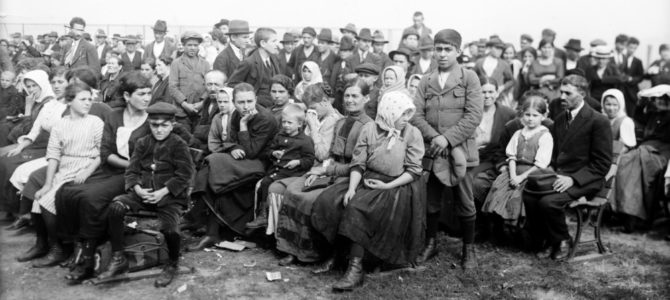
A new book, “Let Them Eat Tweets,” by political scientists Jacob Hacker and Paul Pierson, is the latest attempt to shift the blame for identity politics, maintaining that conservatives are exploiting ethnic anxiety sparked by “changing demographics.”
Yes, after creating a caste order dividing society into identity silos based on race, ethnicity, sex —anything that conveys feelings of victimhood — the left is now shocked that some whites could, too, fall prey to identity politics. Nothing could better illustrate the left’s gaping blind spot about human nature.
To their credit, Hacker and Pierson admit that forecasts predicting America will become a majority-minority country by mid-century are “misleading.” Such estimates do not, for example, take account of ethnic attrition: the children of marriages between whites and members of groups designated as “minorities” will “tend to identify as white” and not feel marginalized.
What’s important, however, is that “today’s native-born whites see it as dramatic.” They cite experiments that claim that when majority-minority projections are shown to whites, they elicit “big reactions, including anger, fear, greater identity with whites, and greater resentment toward nonwhites. It also produces a significant shift to the right on a range of issues.”
Vox founder Ezra Klein ate it up: “Republican elites weaponize racial resentment to win voters who would otherwise vote their economic self-interest.” But what if these experiments (if they are valid) reveal anxiety about not just demographic change? The questions deal, after all, with the concept of minorities.
Truly, even before the American Revolution, U.S. demography was in constant flux. What held such a heterogeneous multitude together was something that is anathema to today’s cultural elites: the melting pot, assimilation, adherence to the Founding creed, and the general culture of the country. Or, as it can be summed up by the traditional, unofficial motto of the United States: E pluribus unum (“Out of many, one”). Whatever you call it, it mediated the continuous arrival of tens of millions of foreigners.
The country’s leaders could have decided long ago — for instance, during the 1893-1925 Ellis Island period — to herd the teeming masses of Armenians, Greeks, Hungarians, Jews, Lebanese, Sicilians, Slavs, and Syrians under artificial identity categories. They could have labeled them “minorities” in need of compensatory justice, and constantly inculcated grievances in them.
As changing demographics are challenging enough, however, America’s earlier leaders sensed that would be a grave mistake. So they did the opposite, extending the enjoyment of equal treatment under the law along with the possibility of becoming American to all newcomers to the nation.
This unique approach was built into the very fabric of the republic. As Secretary of State John Quincy Adams wrote to a prospective German immigrant in 1819, “This is a land not of privileges, but of equal rights.” Decades earlier, James Madison repudiated internal divisions in Federalist No. 14:
Harken not to the unnatural voice which tells you that the people of America, knit together as they are by so many cords of affection, can no longer live together as members of the same family; can no longer continue the mutual guardians of their mutual happiness.
Both ironically and sadly, this model began to change during the hopeful era that aimed at bringing into the American family those who had previously been excluded: blacks. President Kennedy’s Executive Order 10925 directing federal contractors to take “affirmative action to ensure that applicants are treated equally without regard to race, color, religion, sex, or national origin” was turned on its head by his successor, Lyndon B. Johnson.
“Affirmative action” came to mean the opposite: making hiring, contracting, and housing decisions with regard to race, sex, and national origin. These immutable characteristics thus became the alchemy of something new: officially designated minorities. To justify the benefits and the balkanization, activists instilled the members of such minorities with a sense of victimhood.
The categories also became rigid, the sooner to get to the majority-minority tipping point. Ethnic attrition is not allowed to work its magic; if your grandfather is Uruguayan, you’re told you’re a marginalized minority. The oppressors, on the other hand, are told they are at fault for society’s unequal outcomes. Does this have any chance of ever working out well in the mid or long term?
As Zach Goldberg put it in the Tablet last week, “dividing a diverse, multiethnic society into oppressed and oppressor categories on the basis of skin color have, as a matter of historical precedent, more often led to sectarian bloodshed than enhanced justice and equity.”
This new model of pitting “minorities” against the “majority” understandably rankles deplorable “fly-over” Americans. It also confuses some on the right, who think the problem is demography. But to say demography alone is destiny is to say that cultural habits inhere in DNA.
Culture is destiny. Indeed, moving away from the E pluribus unum ideal has been a worrying cultural change. Self-preservation is the first law of nature — which the left always misunderstands — and creating a caste system of power dynamics seeds conflict and solves nothing. Let’s hope enough Americans realize it’s still not too late to turn around.









